
The 32X is an add-on for the Sega Genesis video game console. Codenamed "Project Mars", it was designed to expand the power of the Genesis and serve as a transitional console into the 32-bit era until the release of the Sega Saturn. The 32X uses its own ROM cartridges and has its own library of games. It was distributed under the name Super 32X in Japan and South Korea, Genesis 32X in North America, Mega 32X in Brazil, and Mega Drive 32X in all other regions.

The Sega Saturn is a home video game console developed by Sega and released on November 22, 1994, in Japan, May 11, 1995, in North America, and July 8, 1995, in Europe. Part of the fifth generation of video game consoles, it is the successor to the successful Genesis. The Saturn has a dual-CPU architecture and eight processors. Its games are in CD-ROM format, including several ports of arcade games and original games.

The Genesis Nomad, also known as Sega Nomad, is a handheld game console manufactured by Sega and released in North America in October 1995. The Nomad is a portable variation of the Sega Genesis home video game console. It could also be used with a television set via a video port. It was based on the Mega Jet, a portable version of the home console designed for use on airline flights in Japan.
The fifth generation era refers to computer and video games, video game consoles, and handheld gaming consoles dating from approximately October 4, 1993, to March 23, 2006. The best-selling home console was the Sony PlayStation, followed by the Nintendo 64 and Sega Saturn. The PlayStation also had a redesigned version, the PSone, which was launched on July 7, 2000.
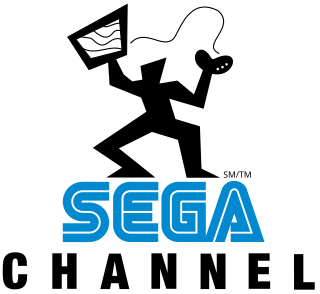
The Sega Channel is a discontinued online game service developed by Sega for the Sega Genesis video game console, serving as a content delivery system. Launched on December 14, 1994, the Sega Channel was provided to the public by TCI and Time Warner Cable through cable television services by way of coaxial cable. It was a pay to play service, through which customers could access Genesis games online, play game demos, and get cheat codes. Lasting until July 31, 1998, the Sega Channel operated three years after the release of Sega's next generation console, the Sega Saturn. Though criticized for its poorly timed launch and costly subscription fee, the Sega Channel has been praised for its innovations in downloadable content and impact on online game services.
Appaloosa Interactive was a corporation, founded in 1982 in Hungary, that produced video games, computer programs and television commercials during the 1980s and 1990s.

The Sega Genesis, also known as the Mega Drive outside North America, is a 16-bit fourth generation home video game console developed and sold by Sega. It was Sega's third console and the successor to the Master System. Sega released it in 1988 in Japan as the Mega Drive, and in 1989 in North America as the Genesis. In 1990, it was distributed as the Mega Drive by Virgin Mastertronic in Europe, Ozisoft in Australasia, and Tectoy in Brazil. In South Korea, it was distributed by Samsung Electronics as the Super Gam*Boy and later the Super Aladdin Boy.
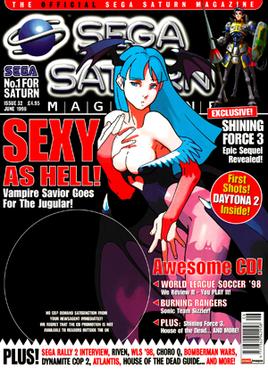
Sega Saturn Magazine was a monthly magazine from England covering the Sega Saturn, a home video game console. It held the official Saturn magazine license for the UK, and some issues included a demo CD created by Sega, Sega Flash, which included playable games and game footage. In 1997, the magazine reported a readership of 30,140. The last issue, 37, was published in November 1998.
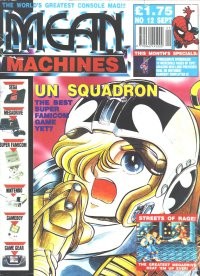
Mean Machines was a multi-format video game magazine published between 1990 and 1992 in the United Kingdom.
The following are lists of Sega games:

Sega Pro was the first publication from Paragon Publishing and catered for the Sega consoles: the Master System, Game Gear and the Mega Drive. Early editorial staff included Dominic Handy (editor), Les Ellis, Dave Perry (designer), James Scullion and Damian Butt as staff writers. The magazine existed between 1991 and 1996. A German edition of Sega Pro was also published (1992-1994).
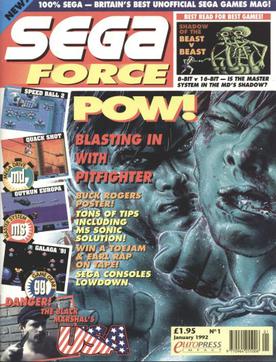
Sega Force was an early 1990s publication that covered the Sega console range.

Paragon Publishing Ltd was a magazine publisher in the UK, which published computer games and other entertainment titles from 1991 to 2003.

Sega Corporation is a Japanese multinational video game company and subsidiary of Sega Sammy Holdings headquartered in Shinagawa, Tokyo. It produces several multi-million-selling game franchises for arcades and consoles, including Sonic the Hedgehog, Angry Birds, Puyo Puyo, Super Monkey Ball, Total War, Virtua Fighter, and Yakuza. From 1983 until 2001, Sega also developed its own consoles.

Sega Hard Girls is a Japanese multimedia project produced as a collaboration between ASCII Media Works' Dengeki Bunko imprint and video game company Sega. The project re-imagines various Sega video game consoles as anthropomorphized goddesses who appear all over modern Japan. The project has inspired a light novel series written by Tōru Shiwasu with illustrations by Kei, which was serialized in ASCII Media Works' Dengeki Bunko Magazine between 2013 and 2014, and an anime television series adaptation titled Hi-sCoool! SeHa Girls by TMS Entertainment, which aired in Japan between October and December 2014. A crossover video game with Idea Factory's Hyperdimension Neptunia franchise, Superdimension Neptune VS Sega Hard Girls, was released for the PlayStation Vita in Japan in November 2015, and in North America and Europe in October 2016.
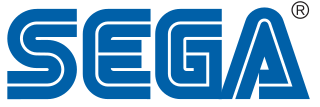
The history of Sega, a Japanese multinational video game and entertainment company, has roots tracing back to American Standard Games in 1940 and Service Games of Japan in the 1950s. The formation of the company known today as Sega is traced back to the founding of Nihon Goraku Bussan, which became known as Sega Enterprises, Ltd. following the acquisition of Rosen Enterprises in 1965. Originally an importer of coin-operated arcade games to Japan and manufacturer of slot machines and jukeboxes, Sega began developing its own arcade games in 1966 with Periscope, which became a surprise success and led to more arcade machine development. In 1969, Gulf and Western Industries bought Sega, which continued its arcade game business through the 1970s.
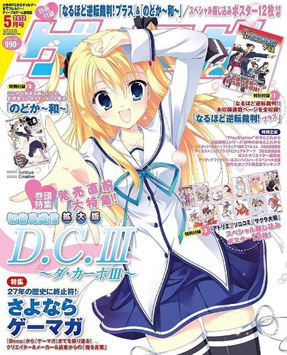
Gemaga was a Japanese video game magazine founded in 1984 as Beep and published by SB Creative. During its history, it was known variously as Beep, Beep! MegaDrive, Sega Saturn Magazine, Dreamcast Magazine, Dorimaga, and finally Gemaga. When it ended publication in May 2012, it was the longest-running Japanese game magazine.














